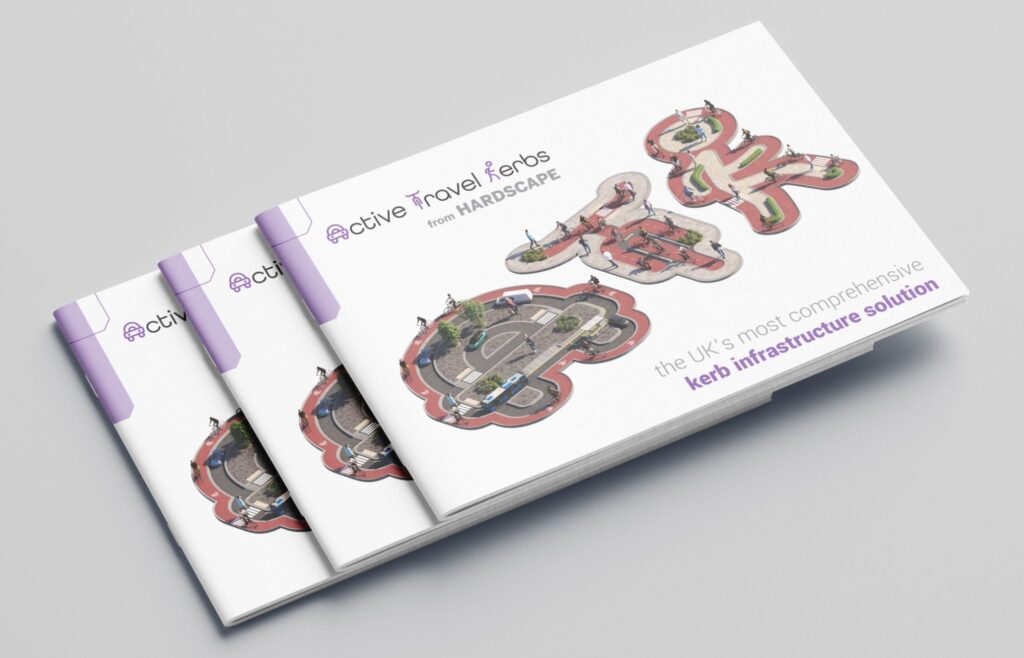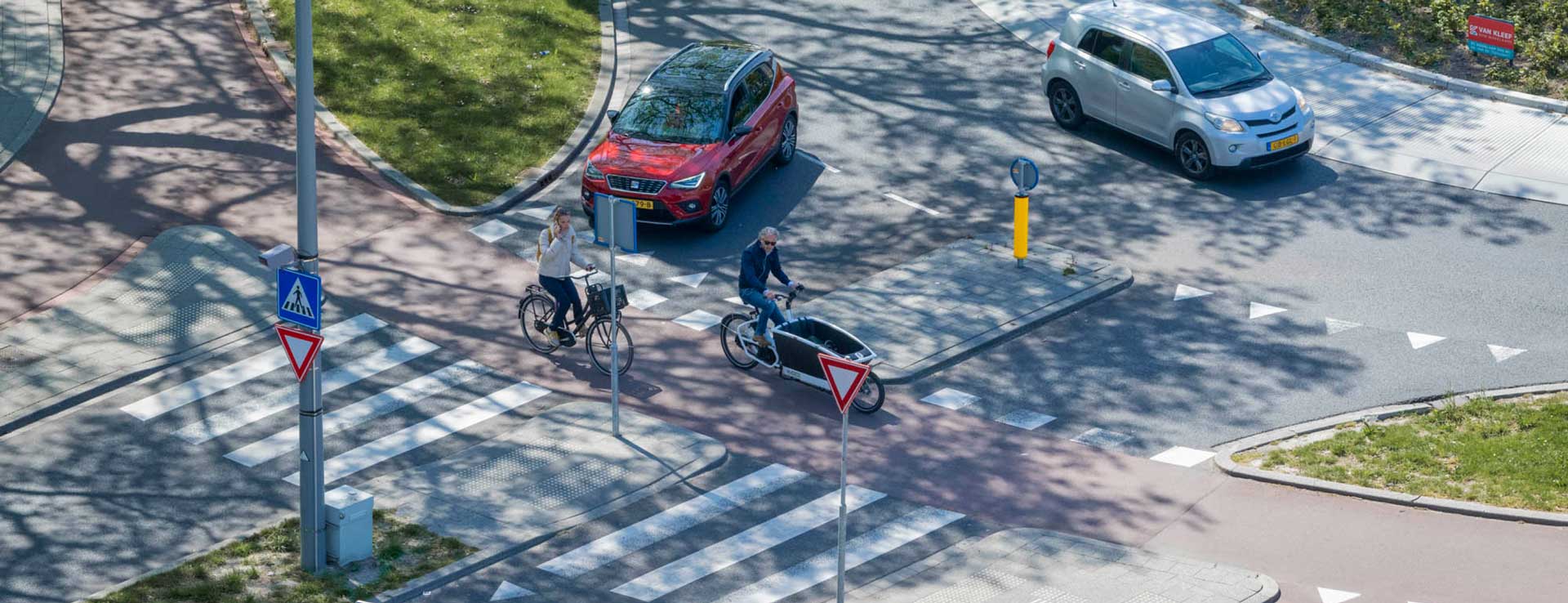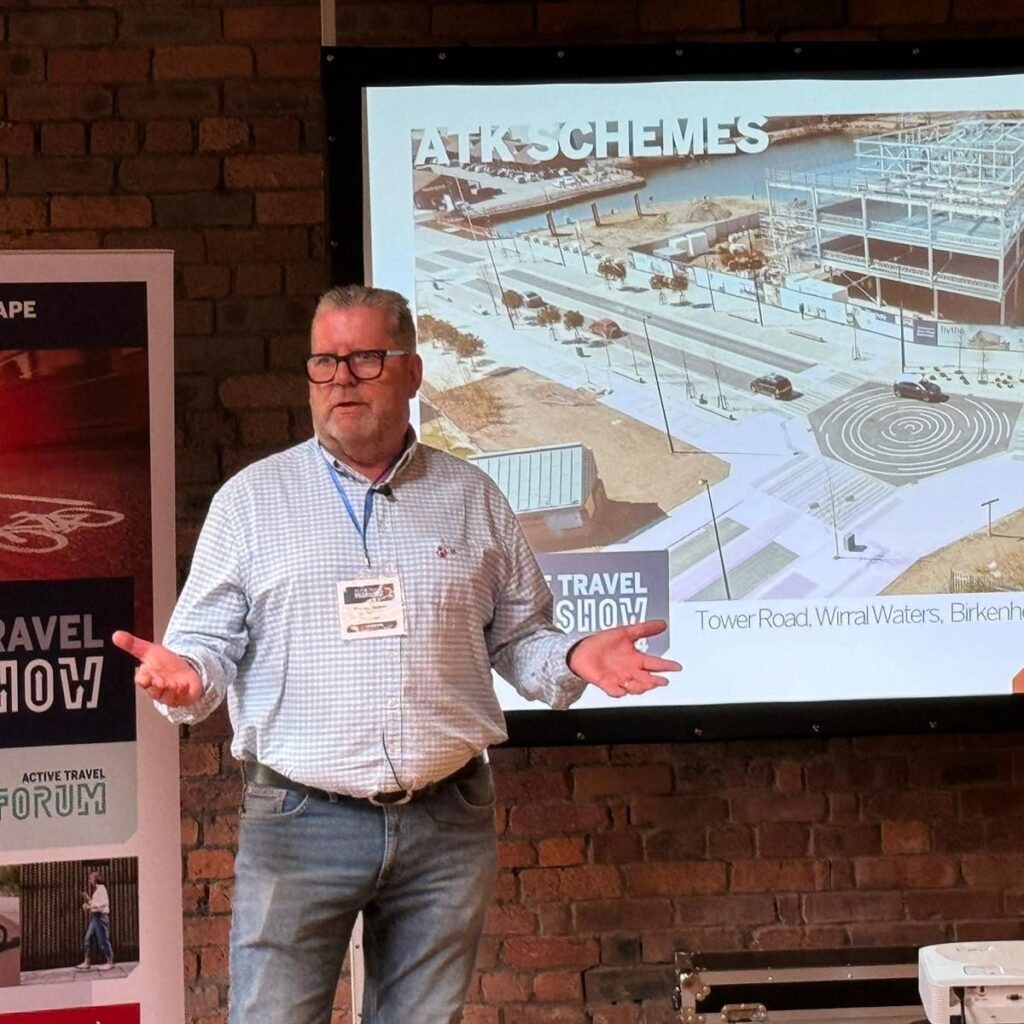Inclusive infrastructure solutions to create an improved health & wellbeing environment safe for cyclists, pedestrians & vehicles
 Following unprecedented levels of walking and cycling across the UK during the pandemic of 2020, the UK Government, influenced by the Dutch, has fast-tracked statutory guidance, indicating local authorities should reallocate road space for significantly increased numbers of cyclists and pedestrians.
Following unprecedented levels of walking and cycling across the UK during the pandemic of 2020, the UK Government, influenced by the Dutch, has fast-tracked statutory guidance, indicating local authorities should reallocate road space for significantly increased numbers of cyclists and pedestrians.
For over 30 years, Hardscape has been renowned for bringing inspiration and innovation to the quality and function of its products to those who wish to select from a range of natural and man-made materials, in a variety of colours and finishes designed to suit the context of each location and scheme.
Even more advanced than just localised LTN improvements, the research, specification, and implementation of Hardscape’s Active Travel Kerbs is very much a part of our integral DNA and ESG ambitions and is the natural next step for specifiers and planners to re-design how cyclists, pedestrians, and vehicle users share and interact with the urban environment more equitably and safely.
Download our new ATK Brochure
For more information contact:
Matthew Sier
National Active Travel Sales Manager msier@hardscape.co.uk | 07541 100305
Hardscape’s Active Travel Solutions can contribute to an improved shared environment in better quality public spaces with enhanced safety, social interaction and a reduced CO2 footprint
CHOOSE FROM OUR COMPREHENSIVE RANGE OF
Active Travel Kerbs
Available in a range of colours and finishes including standard concrete, Kellen Lavaro and natural stone.
Specific kerb types like Entry Kerbs can now be found via the ATK Type options.
Download our new ATK Brochure

The Dutch in the 1970’s, due to the use of cycling in an otherwise motorised transport infrastructure country, realised that separation in an accommodating way for bikes, vehicles, and pedestrians, was essential to interact safely for all users.
Since then, the Dutch have simply mastered, that policy making and design, should be intrinsic in creating a safer environment, inviting cycling and people to participate safely within existing travel infrastructure. Dutch people recognise that to encourage active safety by prevention of incidents is better than being proactively opposite in reducing the effect of an accident. The benefits of this environmentally friendly connectivity strategy are better health and wellbeing for all, economic and environmental advantages (not just aesthetics but Carbon emission reductions too!) and all user groups accessibility, allowing for more space-user equity.
The UK Government state “It must not be seen as mainly part of the leisure industry, but as a means of everyday transport. It must be placed at the heart of the transport network, with the capital spending, road space and traffic planners’ attention befitting that role.”
For the Dutch to achieve this, they have developed intelligent, logical, coherent kerb systems for actively segregating transport modes and methods. Due to the historical aspects, over time, they have developed innovative solutions and more importantly complete solutions to create seamless and multi-user function by design product shapes. Additionally different modes of transport share space in an Active Safety System where special infrastructure detailing allows for motor vehicles to access bicycle zone areas also whilst ensuring protection to the novice cyclist who may be oblivious to vehicular road use in certain areas.
Academic research has also been completed comparing different types of kerb shape (ie 90-degree upstand, sloped or flat) in order to analyse what creates optimum user separation with pedestrian, bike and motorised vehicles interaction. All these solutions are so important too for the current urban/village demands with 15-minute neighbourhoods being the optimum choice to provide all the macro benefits where all community inhabitants should have access to essential services within 15 minutes by foot or by bicycle!
Hardscape have been working with Dutch product solutions for over 20 years, so we have the knowledge and distribution networks to now bring this intelligence and product range to the UK market. We are not offering 5-10 standard solutions, but a multipurpose, multitude of options to facilitate the project so that the optimum design becomes a reality and provides a coherent, direct and completely connected, safe, comfortable and attractive infrastructure space which is accessible for all to use. Hardscape have developed this range to couple with the LTN 1/20 Government Guidance and be in accordance with its jurisdiction.
Additionally, because Hardscape operate in a unique position of sourcing a variety of material type solutions, we can offer a wide and varied range of material types such as natural granites, standard concrete and unique concrete products with exposed natural stone aggregate finishes. This has immediate advantages of colour choice to maximise the distinguishing ability for the visually impaired and to suit different landscape aesthetic contexts. We know from experience that the preference among visually impaired people is for a ‘level difference’ between the cycle track and footway, as this is the most easily detectable form of separation of access zones.
Andy Burnham, the Mayor of Manchester, says: “Streets for All puts people at the centre; to consider the needs for everyone who uses the roads and the pavements, with much greater emphasis on supporting public transport, walking and cycling to help reach our objective for at least half of all journeys to be made sustainably by 2040.”
Action speaks louder than words – so why not discuss with us today how this dynamic and ever-expanding range of Inclusive Infrastructure Solutions products can help to improve the environment in our UK’s towns and cities.
Download our new ATK Brochure
For more information contact:
Matthew Sier
National Active Travel Sales Manager msier@hardscape.co.uk | 07541 100305
Take a look back on our Active Travel Roadshow 2024
Bibliography
15-Minute City Concept
https://www.dezeen.com/2021/10/26/15-minute-city-carlos-moreno-obel-award/
Best Practices Dutch Cycling
https://www.dutchcycling.nl/downloads/DCE%20Best%20Practices%20Dutch%20Cycling.pdf
Curbing Traffic
https://www.modacitylife.com/curbing-traffic
Designing Cycling Infrastructure
https://cyclingsolutions.info/shared-space/
Design Manual for Bicycle Traffic
https://cyclingsolutions.info/shared-space/
Making Space for Cycling
https://www.makingspaceforcycling.org/

